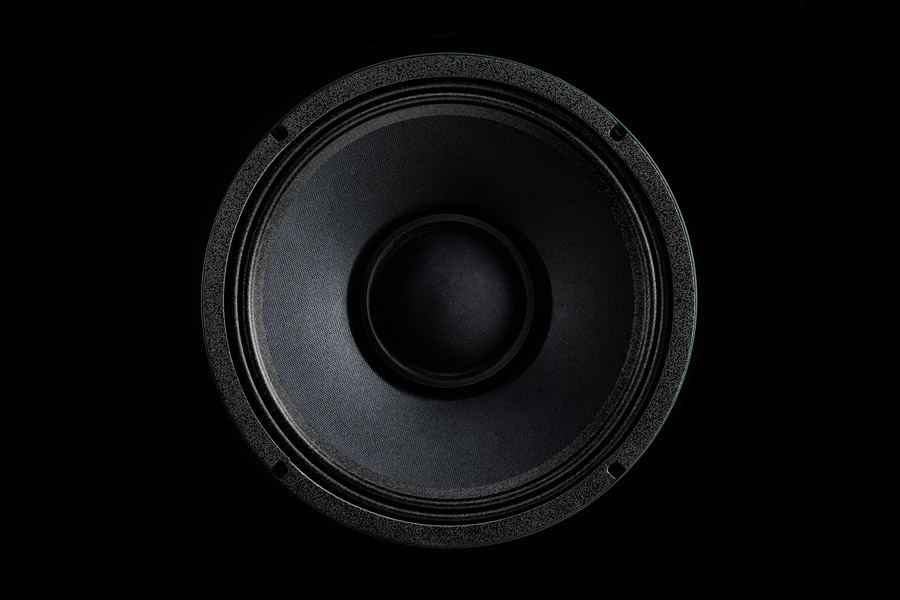When it comes to guitar players and their quest for ultimate tone, the importance of speakers and cabinets is an interesting phenomenon.
Doubtless, when it comes to audiophiles, the choice of loudspeaker is often regarded as being the most important factor in the signal chain. And, of course, the same is true for recording studios.
However, this is not always the case when it comes to musicians. While there is certainly a general awareness of quality with regard to the price of the amplifier they choose, the same cannot always be said when it comes to the speaker cabinet.
A good reason for this maybe the limited form factors for guitar cabinets and the size of the speakers they tend to use. Let's be honest: a 4x12" from one manufacturer does not look significantly different to that of any other.
And while the world of high-fidelity offers an endless variety of sizes, shapes, materials and driver combinations, guitar cabinets only come in few shapes, sizes and construction principles. So, at first glance, the reduced awareness regarding the importance of the speaker cabinet could well be a visual thing. However, a second look (or listen to be precise) reveals that there is a lot more to it…
Hifi speakers and studio monitors are designed to reproduce as much of the audio spectrum as possible. Guitar cabinets, on the other hand, are specifically designed not to do this — if they did, distortion would sound harsh, and reproduction of the lowest frequencies would sacrifice both efficiency and accuracy. Roughly speaking, guitar sound is about mid-frequencies and sound-pressure level.
We are talking about single drivers, designed to cover a specific spectrum with good sounding results, especially for distorted signals at high levels. As a result, both the speaker itself and the cabinet construction play a really important role — something you will likely discover when using your amplifier with different cabinets, or if you ever happen to swap your drivers with different types.
Make a square
A typical guitar cabinet is square-shaped, includes one, two or four speakers of (mostly) the same size, and these will be either front- or rear-mounted. The back of the cabinet will either be closed or partially open. In some cases, an enclosure will offer ports of various kinds. Generally speaking, most cabinets are roughly the same size. Especially for 4x12" cabinets (and 2x12" horizontal arrangements), their minimum width is defined by the typical size of a guitar amplifier, with which they form a so-called "stack".
Another important factor with guitar sounds is your individual experience. While studio and high-fidelity systems strive to sound more or less linear, this is often not the case with guitar cabinets and speakers. Furthermore, all kinds of idols will have become your points of reference for tone: Hendrix, Blackmore, Santana, AC/DC, Van Halen, U2, Dire Straits, Korn… the list goes on.
… and put a driver
But let's focus on the speaker itself. There are a limited number of manufacturers, and an even more limited number of available speaker sizes. These drivers can be further categorized by their frequency range, power rating, their impedance, or by the type of magnet being used. Another important fact is the speaker's sensitivity — this defines how loud it will play (typically measured as SPL@1m distance with an input of 1 watt).
It´s worth mentioning that most drivers rely on ceramic magnets, followed by the older alnico (Aluminum, Nickel, Cobalt) types. The more efficient neodymium magnets, often used in bass cabinets, are rarely found in guitar cabinets.
Over time, there have been several new inventions, yet no radical changes in driver technology for guitar speakers. A higher power-rating — to address the demands for higher levels, modern genres, or lower tunings — would be the most significant change in the last 50 years. And, since guitarists often cherish sounds of the past, the demand for well-known and treasured classics, re-issues and updated replacements is bigger than the demand for new approaches.
As said, guitar speakers do not claim to be linear, and neither do they reproduce the full frequency-range. Their focus on the midrange spectrum results in many of them having a specific sound or "feel" — it's not about neutrality, so much as it´s about taste. Certain sounds benefit from crisp top-end, while others prefer a rounded top-end. Some like it warm, others like it dry and firm.
Vintage speakers, or their re-issues, often have a low power-rating. Back in the '50s and '60s, there were no P.A. systems like today, so the guitar amplifier had to speak for itself. To compete with the rest of the band, and withstand the output of the amplifier, it often needed multiple drivers in a cabinet. These speakers had a distinctive sound due to partial oscillations occurring on the oversized membrane.
The few drivers that were able to handle bigger wattage were not necessarily preferred.
The most important brand in the guitar speaker market is certainly Celestion® from the UK. Jensen, from the USA, played a big part in legendary "American" sounds, but went out of business in the late '60s. Other important names came from P.A. systems, e.g. JBL®, Altec® and Electro-Voice®, but there have always been other important manufacturers, such as Eminence®, Tone Tubby®, Weber® and Fane®.
When it comes to making your choice, you should trust your ear. Weight is an important factor, and so are sound pressure level and power rating. So, this takes us back to where we started, i.e. never underestimate the role of a speaker in your amplification system — it is, in fact, of significant importance. Speakers sound and feel different, and it is wise to regard them as a critical part of your sound …
Find more individual information about the various speakers available as Imprints for the Kemper Kabinet. But do not forget: „Season to taste!“ Sometimes non established combinations might make great sense!

